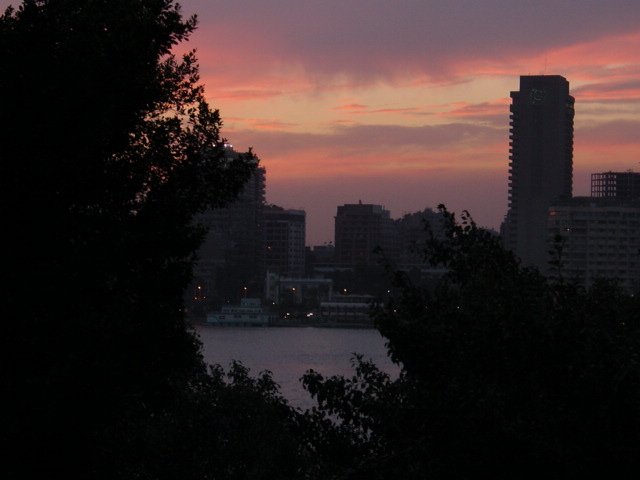December 30, 2001
We spent most of the day in Coptic Cairo. Centered around Mar Girgis church (St. George's), this is Cairo's Old City and is where many of its historical churches are. We worshiped at the Hanging Church (so-called because of its architecture, not its view on the death penalty). The Orthodox service was about two hours long, and included a prayer specifically meant for the Coptic Church which had many references to the meaning of Egypt throughout Scripture - a place of slavery, yes, but also a frequent place of refuge (for Jesus, Abraham, etc.).
Coptic Orthodox clergy.
One of the altar boys asked Elizabeth if she spoke English or Arabic. When she replied "English", the priest immediately began using English and Arabic together in the eucharist liturgy - quite a sign of hospitality. There was no instrumentation, apart from a single pair of cymbals. Most people took their shoes off for the duration of the service and certainly for communion (a reference to Moses in the presence of the burning bush?), and we passed the peace to one another by sliding our hands together and then bringing them to our own mouths to kiss them. Beautiful.
We then moved on to many of the other churches in the area, including one which is built on the site of a cave where the Holy Family is believed to have taken refuge after Jesus' birth. Unfortunately, the cave was closed (due to flooding) and the church didn't allow pictures. Since we saw our visit very much in tangent with the Flight to Egypt, this was disappointing.
Elizabeth posing with newly baptized Daoud.
We headed on to St. Barbara's Church, built in honor of an early Egyptian martyr whose father - a pagan - had her killed for becoming a Christian. There, we arrived just after a baptism had taken place. As someone sang prayers and clanged cymbals, the parents invited us to take pictures with newly-baptized Daoud (David). That beat any pseudo-historical cave by a long shot.
Our last stop was the old Cairo Synagogue, once converted to a church and now a restored Jewish house of worship. Once home to a thriving Jewish community, Cairo now only has a few hundred, mostly older Jewish residents. We were told that some Jews left Cairo (and Egypt itself) when Israel was established, but the majority left when anti-Jewish sentiment and violence grew after 1967 when Israel and Egypt fought and Israel took the Sinai. The synagogue is built on another Holy Family resting point, as well as the place where Moses was pulled out of the Nile by Pharaoh's daughter. Its impeccable decorations and lack of a worshiping congregation contrasted strongly on both points with the churches in the area.
Making new friends in Cairo.
We then joined up with a friend Marthame had met on his first trip to the Friends' School in Ramallah in 1993. She is working for the Presbyterian Church with her organization Care with Love, which trains young adults (largely unemployed dropouts) to provide in-home care for the elderly and disabled. She took a few hours off from her hectic schedule to give us the royal treatment. She took us to downtown Cairo to a friend's high-rise apartment for an afternoon of delicious food, intelligent conversation, and a look at the new Euro!
Cairo and the Nile at sunset.
Kolali Presbyterian Church of Cairo.
After another spectacular sunset over the Nile, it was back to the Seminary to meet up with our friends and head off to Cairo's Kolali Presbyterian church. Quite a contrast with the Coptic service. The congregation was an interesting mixture of Egyptians and ex-pats, most connected with the Seminary. There was a couple there from Paoli (PA) Presbyterian Church who are building their sister-church relationship with Kolali.





